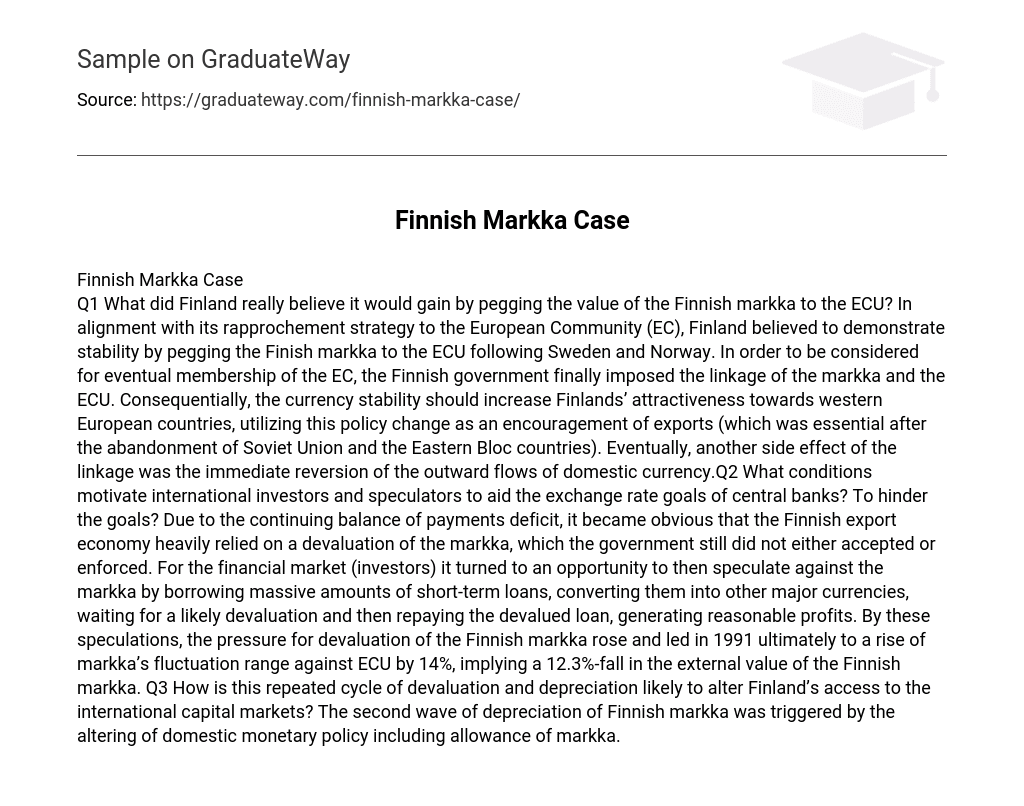1 What did Finland really believe it would gain by pegging the value of the Finnish markka to the ECU? In alignment with its rapprochement strategy to the European Community (EC), Finland believed to demonstrate stability by pegging the Finish markka to the ECU following Sweden and Norway. In order to be considered for eventual membership of the EC, the Finnish government finally imposed the linkage of the markka and the ECU. Consequentially, the currency stability should increase Finlands’ attractiveness towards western European countries, utilizing this policy change as an encouragement of exports (which was essential after the abandonment of Soviet Union and the Eastern Bloc countries). Eventually, another side effect of the linkage was the immediate reversion of the outward flows of domestic currency.
Q2 What conditions motivate international investors and speculators to aid the exchange rate goals of central banks? To hinder the goals? Due to the continuing balance of payments deficit, it became obvious that the Finnish export economy heavily relied on a devaluation of the markka, which the government still did not either accepted or enforced.
For the financial market (investors) it turned to an opportunity to then speculate against the markka by borrowing massive amounts of short-term loans, converting them into other major currencies, waiting for a likely devaluation and then repaying the devalued loan, generating reasonable profits. By these speculations, the pressure for devaluation of the Finnish markka rose and led in 1991 ultimately to a rise of markka’s fluctuation range against ECU by 14%, implying a 12.3%-fall in the external value of the Finnish markka. Q3 How is this repeated cycle of devaluation and depreciation likely to alter Finland’s access to the international capital markets? The second wave of depreciation of Finnish markka was triggered by the altering of domestic monetary policy including allowance of markka.





